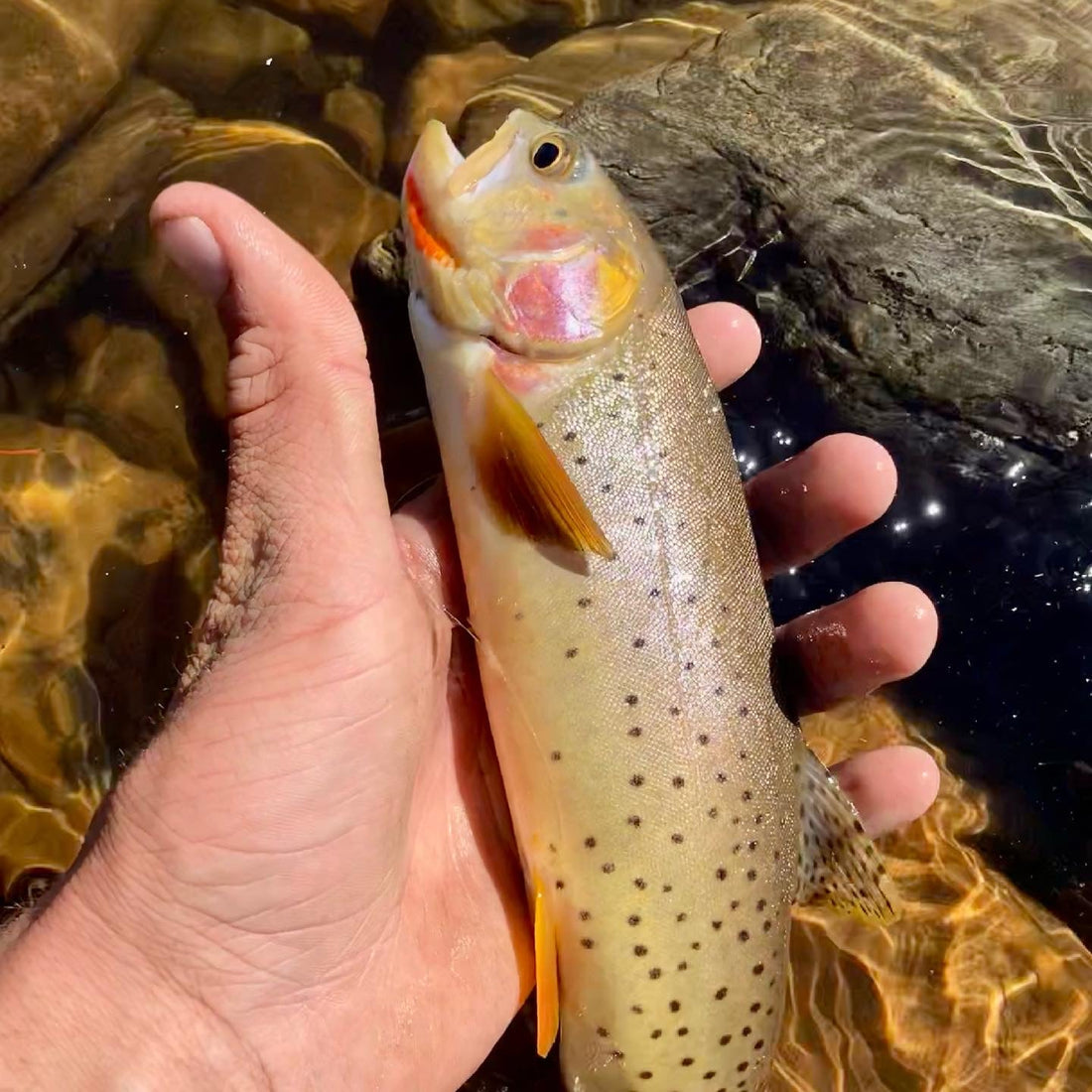Fishing on a thru-hike? That's right! Right now, thousands of aspiring thru-hikers are pouring over checklists, stress-testing gear, and packaging food as they prepare for spring departures on one of America’s premier long-distance trails: the Pacific Crest Trail, the Continental Divide Trail, and the Appalachian Trail.
If you’re prepping for a thru-hike, plenty of online blogs tell you why you shouldn’t bring something. In this article, I’ll do the opposite: convince you to pack something that 99.9% of fellow hikers will leave behind – fishing gear. In 2021, I completed the Continental Divide Trail, starting in the Chihuahua desert in New Mexico and ending in the northern mountains of Montana. In the five-month, 3,000-mile journey from Mexico to Canada, my brother and I were the only thru-hikers we came across carrying fishing gear. Here are five reasons why you should, too.
1. The ratio of weight to entertainment is perfectly justifiable
Here’s what my fishing kit looked like on the CDT: a Tenkara rod and line, a plastic tin filled with a handful of flies, a spool of 5x tippet, and a small floatant bottle. I don’t know how many grams that weighed, nor do I care. I do know that it weighed significantly less than some of the other absurdities I saw carried on trail. If you love fishing, this small kit is worth its weight in gold. After all, the downside of less than a pound of extra weight had a major upside: bent rods and fish in hand!
2. You’ll be traversing some of the fishiest areas in America
Golden trout? Alpine cutthroats? Native brookies? The Big Three trails offer a hell of a lot of fishing opportunities, and it would be a shame to miss out. The PCT travels through countless fish-filled lakes, rivers, and streams in the Sierra and Cascades. The CDT takes you alongside pristine Colorado alpine lakes and remote sections of wilderness that seldom get fished. The AT will carry you across some of the best native trout fishing available in the eastern United States. When you get off trail and someone asks how the fishing was in the Wind River Range or the John Muir Wilderness, you’ll be kicking yourself if your only response is well, I didn’t bring any fishing gear.
3. Fishing on a thru-hike will break up the monotony
Here’s a dirty secret about thru-hiking: it’s often boring. 3 to 6 months of walking will simply not always be a YouTube highlight reel filled with epic music. Sometimes, things will feel stale, and even spectacular scenery will feel mundane. Throwing a few casts during lunch is a great way to re-energize yourself. You can even start planning campsites and daily mileage around places that look promising for fishing.
4. Tired of ramen? How about fresh fish
Ok, admittedly, we never did a proper catch-and-cook while on trail. The realities of long-distance backpacking are such that the leisure time required for even this simple meal is usually just not there. However, that’s partly due to our traveling habits and the realities of the CDT in particular. We like to hike about the same number of miles each day. Other groups would do huge miles one day, and smaller distances the next. They likely had a lot more free time built into their shorter rest days. If you’re hiking a shorter trail, you won’t feel the same pressure to cover large distances every day and could theoretically take time to cook up a catch. A small square of foil and a pinch of seasoning is just about all you need to cook a whole trout over some coals.
5. It’s a more authentic way to experience nature
There is absolutely nothing wrong with going for a simple hike. However, I think there are more interesting and meaningful ways to experience nature than simply walking through it. Those who hunt and fish know that interacting with wildlife – observing, stalking, and pursuing fish and animals – offers a more tangible way of interacting with wild areas than simply walking through them. May thru-hikers boast about big mileage days and epic suffering. But can they name the trees that have been blooming? The different inset hatches happening on the river? The fish that swim in their drinking water or hazardous water crossings? Angling won’t make you a complete outdoorsman/woman overnight. But it opens the door to a richer and deeper connection with our wild places. Doing a bit of fishing on your thru-hike will give you a greater appreciation for, and understanding of, the places through which you’re traveling.
I’ll end this list with a bit of honesty. While we carried fishing gear on the CDT, we didn’t fish that much. Many an alpine lake or meandering meadow creek were passed up in the name of MILEAGE. Ultimately, we were working hard to hike 25-30 miles each day and had very little surplus energy or free time to take a cast. I can remember sometimes feeling impatient or hurried when we stopped to fish. We could be getting further ahead! Do your best to resist that urge! A long hike, even one that will take months, will fly by. A bit of fishing will help you slow down and savor the incredible landscapes and experiences on trail.

